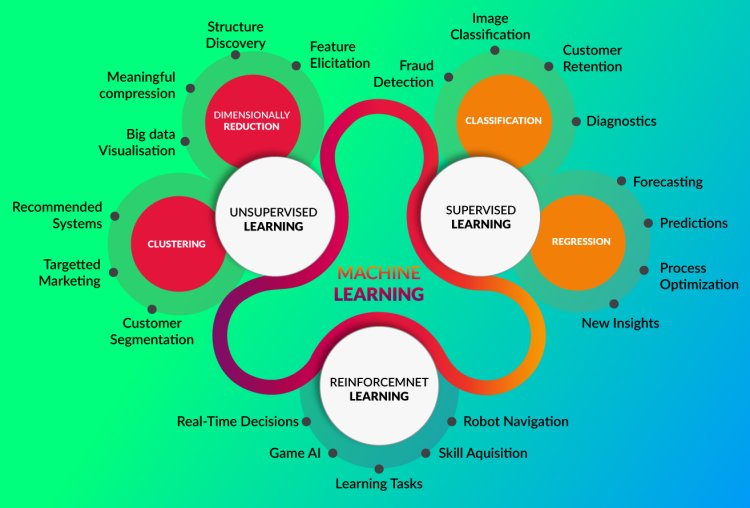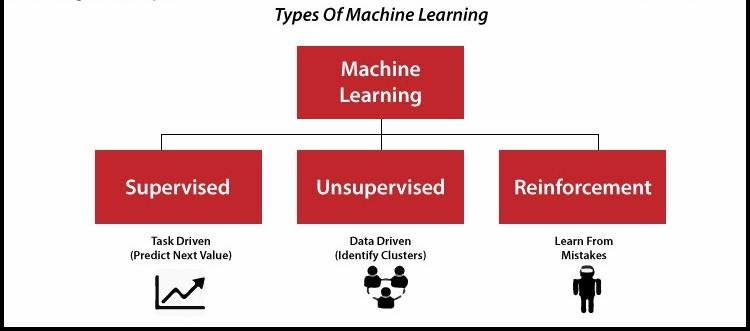Types of Machine Learning: Types and Definitions
There are three types of machine learning: supervised learning, unsupervised learning, and reinforcement learning, here are the definitions

With the help of machine learning algorithms, AI has been able to advance beyond performing programmed tasks. Before machine learning became mainstream, artificial intelligence programs were used only to automate low-level tasks in business and enterprise environments.
This includes tasks such as smart automation or simple rule-based classification. This meant that AI algorithms were limited only to the area being processed. However, with the help of machine learning, computers were able to deviate from what they were programmed to and begin to evolve with each iteration.
Machine learning is fundamentally different from artificial intelligence in that it can evolve. Using a variety of programming techniques, machine learning algorithms can process large amounts of data and extract useful information. Therefore, previous iterations can be improved by reviewing the data provided. We can't talk about machine learning, let alone big data, which is one of the most important aspects of machine learning algorithms. Because statistical techniques are widely used in this area, any type of AI can generally achieve good results depending on the quality of the data set.
Machine Learning is no exception, and powerful machine learning solutions require a good flow of structured and diverse data. In today's online world, businesses typically have access to a wealth of data about their millions of customers. With a large number of data points and many fields, this data is known as Big Data because it contains a huge amount of information.
As mentioned earlier, machine learning algorithms can be improved with training. Today, machine learning algorithms are trained using three well-known methods. There are three types of machine learning: supervised learning, unsupervised learning, and reinforcement learning.
Types of Machine Learning:

Supervised Learning
Supervised learning is one of the most basic types of machine learning. In this type, machine learning algorithms are trained on labeled data. Although the data must be accurately labeled for this method to work, supervised learning is very effective when used in the right context.
When training with a supervisor, the machine learning algorithm comes with a small training data set to work with. This training data set is a small part of a larger data set and serves to provide the algorithm with a basic understanding of the problem, solution, and data point to work with. The training dataset is also very similar in characteristics to the final dataset, providing the algorithm with the labeled parameters it needs to solve the problem.
The algorithm then finds the relationship between the given parameters, essentially establishing a causal relationship between the variables in the data set. At the end of training, the algorithm understands how the data works and the relationships between inputs and outputs. This solution is then deployed for use with the final dataset trained in the same way as the training dataset. This means that supervised machine learning algorithms continue to improve after deployment, discovering new patterns and relationships as they learn from new data.
Unsupervised Learning
Unsupervised machine learning allows you to work with untagged data. This means that no human labor is required to make the data set machine-readable, allowing programs to work with much larger data sets.
When supervised, labels allow the algorithm to find the exact relationship between two data points. However, unsupervised learning creates hidden structures because there are no shortcuts to the task. Relationships between data points are recognized by algorithms in an abstract way without human intervention.
The creation of these hidden structures makes unsupervised learning algorithms universal. Instead of explicit and posed tasks, unsupervised learning algorithms can adapt to the data by dynamically changing the hidden structure. This provides more room for post-deployment development than supervised learning algorithms.
Reinforcement Learning
Reinforcement learning is directly inspired by the way people learn from life data. They have algorithms that use trial and error methods to improve themselves and learn in new situations. Favorable outcomes are rewarded or “enhanced” while unfavorable outcomes are discouraged or “punished”.
Reinforcement learning works by placing an algorithm in a work environment with an interpreter and a reward system based on the concept of psychological conditioning. At each iteration of the algorithm, the output is passed to an interpreter, which determines whether the result is favorable or not. When the program finds the correct solution, the interpreter rewards the algorithm to enhance the solution. If the results are poor, the algorithm is forcibly repeated until it finds the best result. In most cases, the reward system directly depends on the effectiveness of the outcome.
For typical reinforcement learning use cases, such as finding the shortest path between two points on a map, the solution is not absolute. Instead, you receive an efficiency score expressed as a percentage. The higher this ratio, the more rewarded the algorithm is. Therefore, the program is trained to provide the best solutions for the best rewards.
types of machine learning, how many types are available in machine learning, types of learning in machine learning, machine learning types, types of learning in machine learning, types of ml, types of machine learning, different types of machine learning







